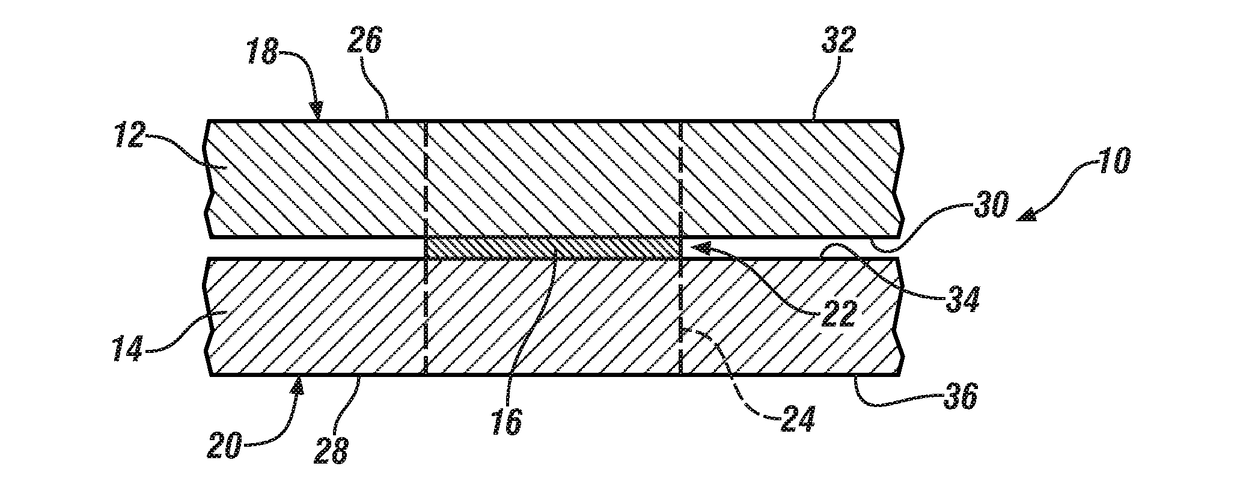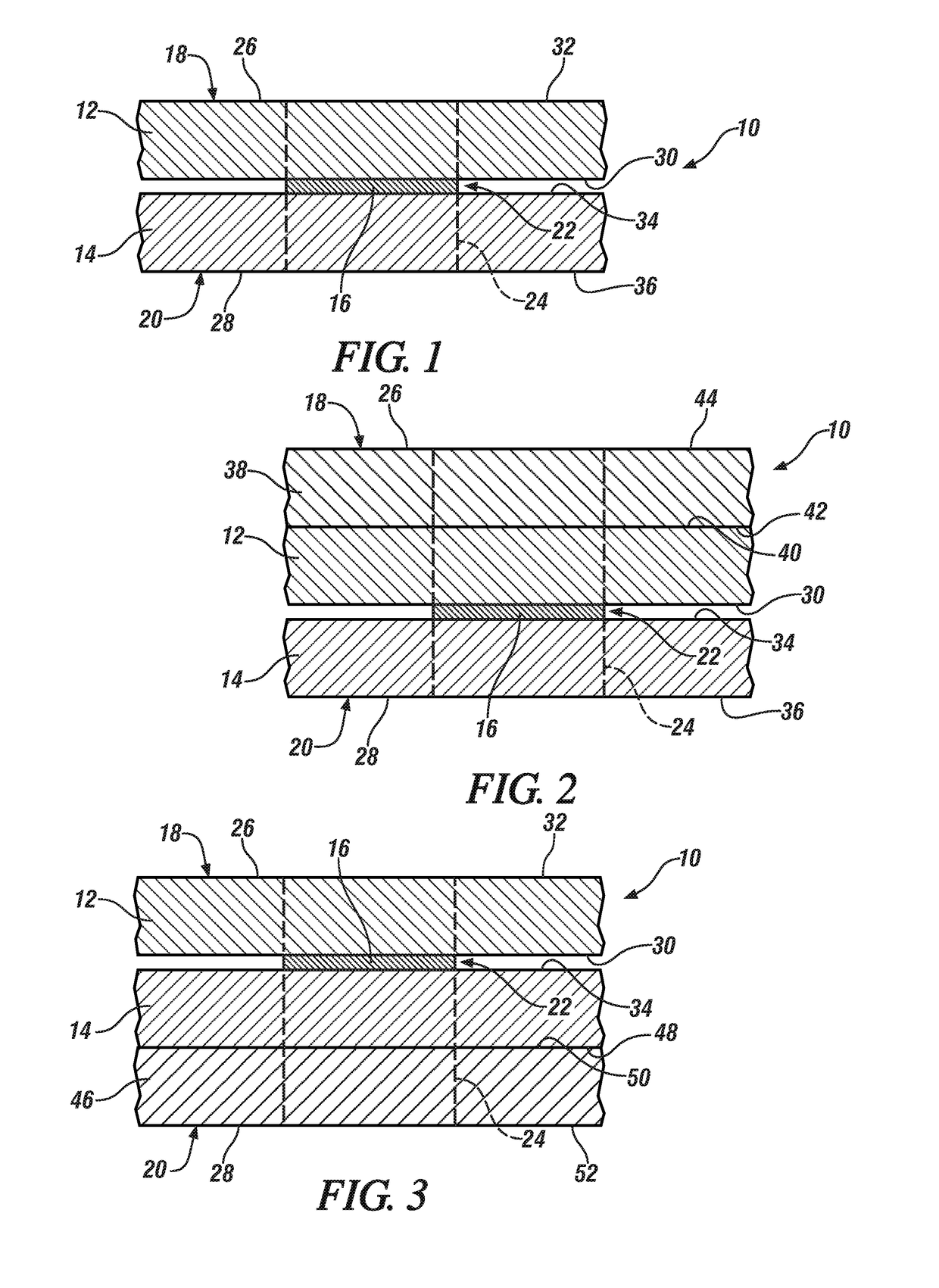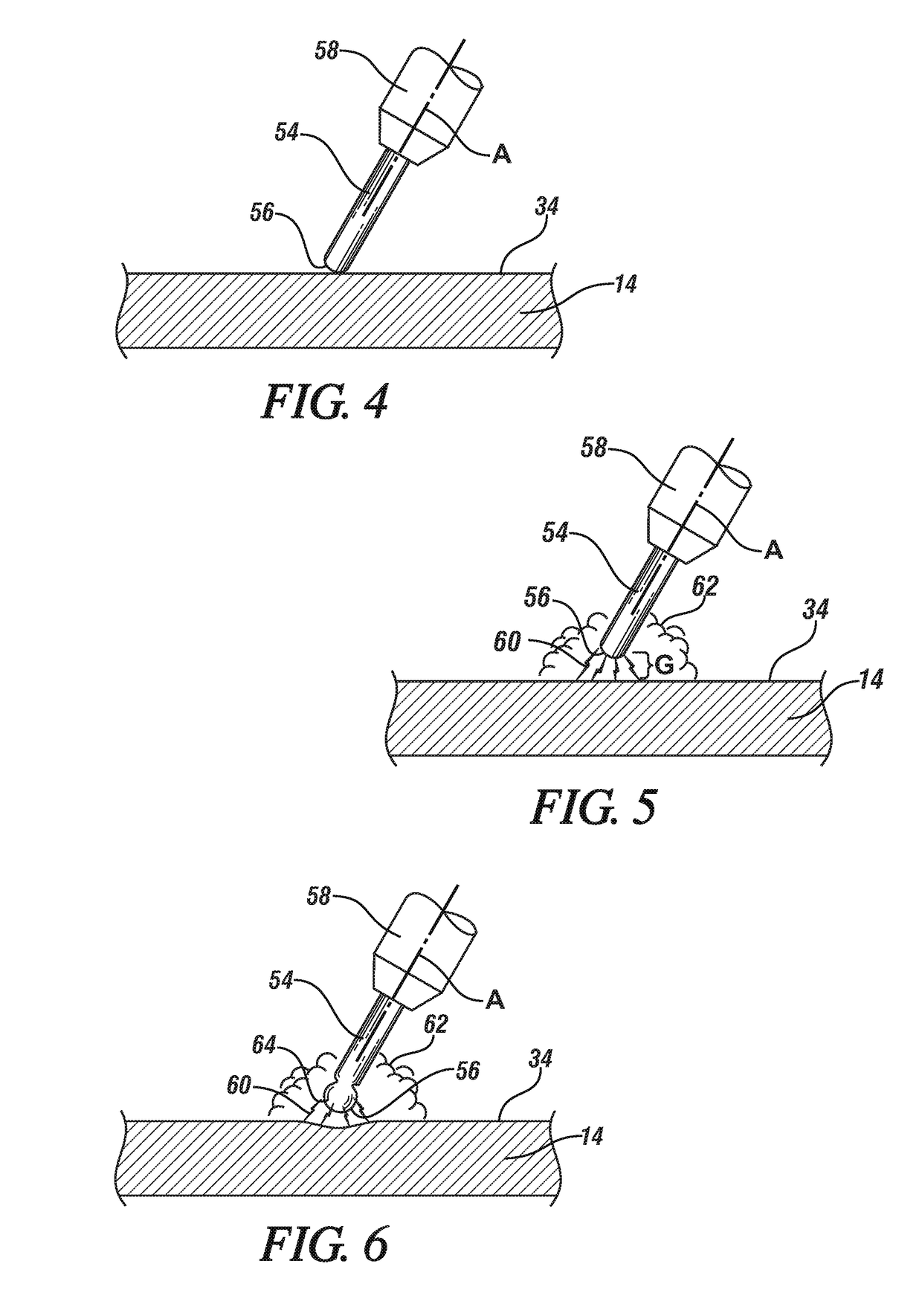Method of joining aluminum and steel workpieces
a technology of steel workpieces and workpieces, which is applied in the direction of electrode vibration holders, manufacturing tools, and solvents, etc., can solve the problems of high consumable cost, more laborious installation of mechanical fasteners, and insurmountable technical and economical obstacles that accompany welding and/or mechanically fastening together an aluminum workpiece and a steel workpiece, so as to achieve the effect of increasing the electrical current applied to the consumable electrode rod
- Summary
- Abstract
- Description
- Claims
- Application Information
AI Technical Summary
Benefits of technology
Problems solved by technology
Method used
Image
Examples
Embodiment Construction
[0025]A method of joining an aluminum workpiece and a steel workpiece through reaction metallurgical joining is disclosed. Reaction metallurgical joining is a process in which a reaction material is heated and compressed between the opposed faying surfaces of the aluminum and steel workpieces to metallurgically join together the two workpiece surfaces. The reaction material is formulated to metallurgically react with the aluminum and the steel included in the aluminum and steel workpieces, respectively, when the reaction material is heated. A copper-based reaction material composition such as, for instance, pure unalloyed copper or a suitable copper alloy, can metallurgically react with both the aluminum and steel workpieces by having the capacity to wet steel on one hand and form a low-melting point eutectic alloy with aluminum on the other hand. Such a reaction material composition can thus form a bonding interface with both steel and aluminum when heated and then subsequently coo...
PUM
| Property | Measurement | Unit |
|---|---|---|
| current | aaaaa | aaaaa |
| thickness | aaaaa | aaaaa |
| thickness | aaaaa | aaaaa |
Abstract
Description
Claims
Application Information
 Login to View More
Login to View More - R&D
- Intellectual Property
- Life Sciences
- Materials
- Tech Scout
- Unparalleled Data Quality
- Higher Quality Content
- 60% Fewer Hallucinations
Browse by: Latest US Patents, China's latest patents, Technical Efficacy Thesaurus, Application Domain, Technology Topic, Popular Technical Reports.
© 2025 PatSnap. All rights reserved.Legal|Privacy policy|Modern Slavery Act Transparency Statement|Sitemap|About US| Contact US: help@patsnap.com



